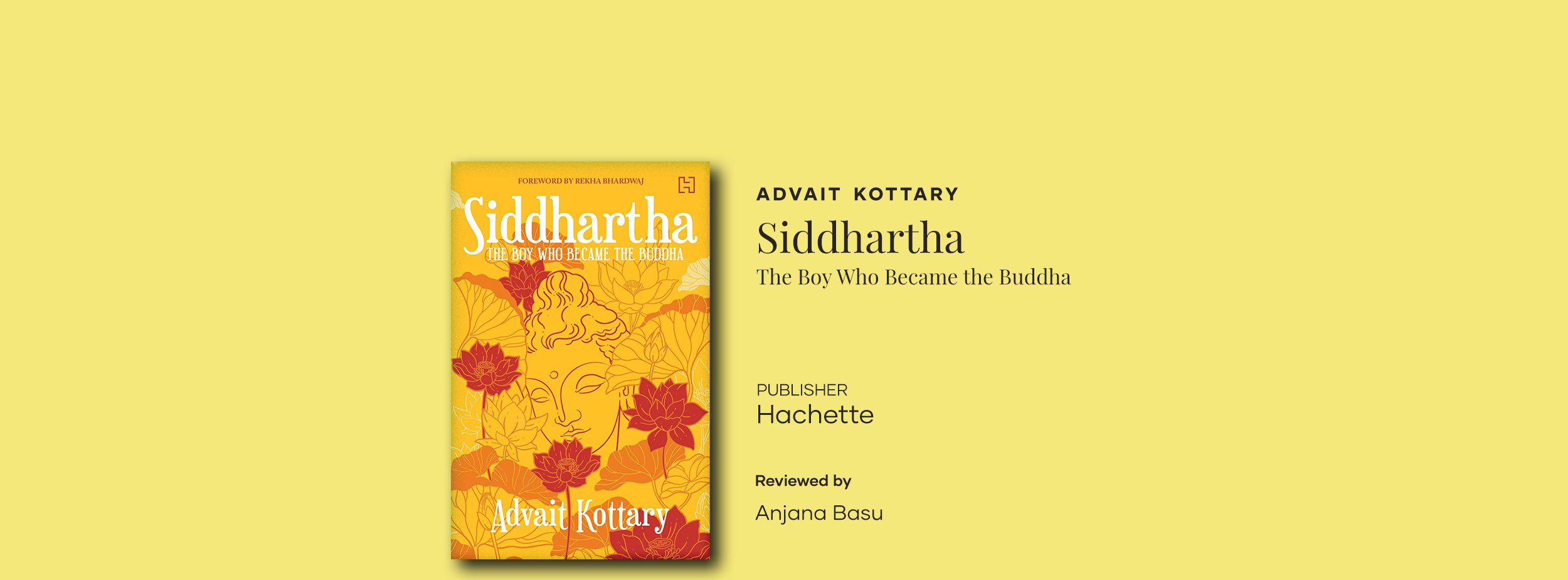
There are lots of tales about the life of the Buddha – how his father King Shuddodhana, on being told that his son was destined to be soul greater than all others decided to cocoon his son in Kapilavastu, shielding his from the ills of life. However, Shuddodhana could not fight that stars so the young Siddhartha encountered old age, sickness and death – so the story goes – and renounced the worldly life as well as his wife Yasodhara and his baby son. We are also aware of Siddhartha’s jealous cousin Devdutt, who aspired to the throne and was Siddhartha’s competitor at every step, losing out time and again because of Siddhartha’s superior skills.
The narrative is aimed at general readers and, as a result does not go into any complicated nuances of the Buddha story. Nor are there any surreal dreams of his birth – Mahamaya his mother’s soul aim is to bring a great soul into the world without any mystic elephants entering her side or her delivery standing up against a tree in the Lumbini gardens. Maya gives birth and dies leaving her baby son to her sister and co-wife Prajapati to nurture. The Buddha sees this all in his enlightened form.
Though the title implies boyhood, the story focuses on the Prince in his growing years and his renunciation of worldly life, his discovery of meditation which he was initially forced to abandon and his separation from his Guru. The narrative also displays his skill in horsemanship and staff fighting to prove that Siddhartha could have been a great ruler of the Sakyas had he so chosen. All this is the archetypal tale of a boy from a warrior community who sets out to find his true self and an escape from suffering.
Kottary chooses to tell his story through the eyes of the Buddha after he has defeated the demon Mara and achieved his final illumination. The Buddha is a watcher of his own life adding new perspectives as he watches his life story unfold. Old age, sickness and death are given new more normal dimensions in the story – the explanation lies in a ghetto created by Shuddodhana of the maimed and mutilated to cocoon his son which has a ricochet effect. Death comes as one would expect from a warrior in a battle and is taken in its stride. However, it is Siddhartha’s discovery of his mother’s death which has the greater effect – for that is the suffering that one has to overcome.
The author takes us through the Buddha’s pathway to spiritual awakening, Guru by Guru. He learns to carry a begging bowl and subdue his ego and return to meditation. Gradually his power of meditation outstrips that of any guru whose ashram he joins and despite his own misgivings he becomes an Awakened One. The author’s style is simple – he does not go into any deep explanation of Buddhist philosophy – he sticks to the premise that one who is born must die and from that thought all truths are to be discovered. Siddhartha travels back in time and through space to become the Enlightened One and his renunciation of starvation and acceptance of food at the hands of Sujata who comes to save his life with her payesh is at first seen as betrayal by his followers.
Kottary speaks about the fivefold way simply, as Siddhartha evolves it, so that the book becomes a modern version of the birth of an influencer – to put it in 21st century terms. King Shuddodanasees his whole family drawn into Siddhartha’s sangha with regret and disbelief - there are characters like Bimbisar, Ajatashatru, the beautiful Amrapalli taken from the pages of history, many of whom are drawn to the Buddha’s teachings in a steady flow- but Shuddodana also has the privilege of having Siddhartha both as son and spiritual comfort on his deathbed – the message being that family ties remain despite or because of spiritual enlightenment.
For those interested in the Buddha’s life and message, the book is an easy read.
